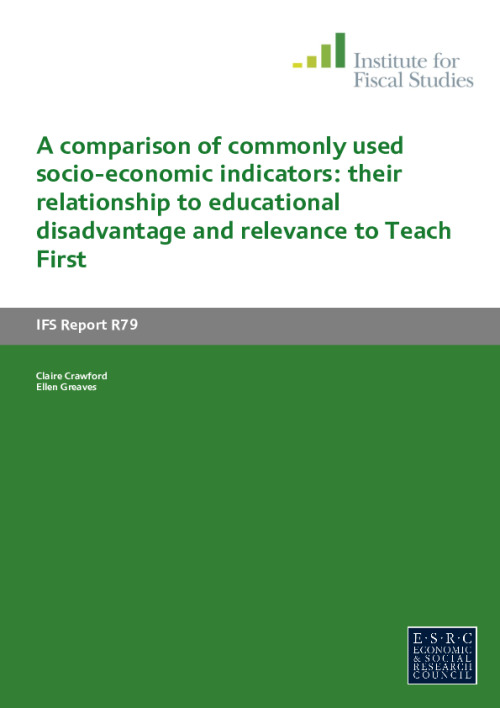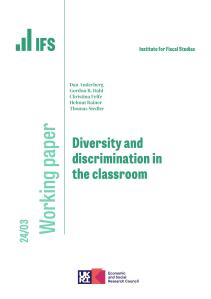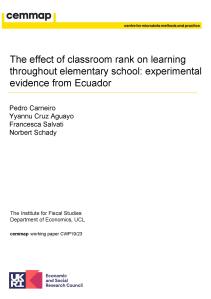Teach First is a charity that seeks to address educational disadvantage by placing high-quality graduates as teachers in schools with the most educationally disadvantaged pupils. There are two questions to answer when deciding the appropriate way to do this. First, how does one define educational disadvantage? Second, in the absence of observing all characteristics of a pupil that define them as educationally disadvantaged, which socio-economic indicator (or combination of indicators) best predicts whether a pupil is educationally disadvantaged?
This report provides an overview of free and commonly used socio-economic indicators which are available from administrative data in England. It focuses on one individual measure of socio-economic status- the pupils' eligibility for free school meals (FSM)- and three neighbourhood measures: Income Deprivation Affecting Children Index (IDACI) scores (used by Teach First to define its current eligibility criterion), Index of Multiple Deprivation (IMD) scores and local area measures of higher education (HE) participatoin known as POLAR2.
The report presents the relationship between the socio-economic indicator currently used by Teach First to determine eligibility for its programme and the other socio-economic indicators already outlined. We find that the correlation between indicators that primarily reflect income deprivation is high, and that the correlation with indicators that reflect participation in HE tends to be lower. The crossover between all socio-economic indicators is presented in full as a ready reckoner (look-up table) produced alongside this report.
This work was funded by Teach First










